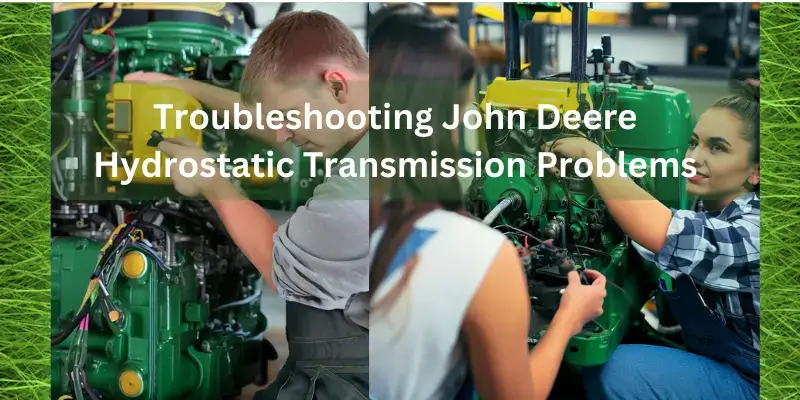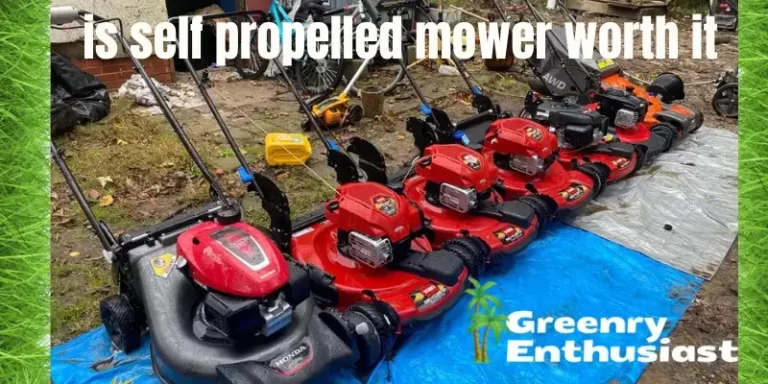How to Solve the John Deere Hydrostatic Transmission Problems in 2024
Are you struggling with John Deere hydrostatic transmission issues in 2024? You’re not alone. As the backbone of many John Deere machines, the hydrostatic transmission is important for smooth operation, but when problems arise, they can be a real headache. Whether you’re a seasoned farmer, a landscaping professional, or a passionate gardener, encountering transmission troubles can disrupt your work and productivity.
Fear not, because this comprehensive guide is here to help. I will discuss the common issues with the John Deere hydrostatic transmission and provide step-by-step solutions to get your equipment back in top shape. From understanding the basics of hydrostatic transmission to troubleshooting specific problems, this blog is your go-to resource for maintaining the efficiency and longevity of your John Deere machinery.
Recognizing the Signs – Troubleshooting John Deere hydrostatic transmission problems
Here are some signs that your John Deere Lawnmower might be having hydrostatic transmission system problems:
Sluggish or No Acceleration:
- Your mower is not as speedy as it used to be.
Trouble Shifting Gears:
- It is hard to switch between forward and reverse
Transmission Fluid Leaks or Weird Movements:
- You spot fluid leaks or notice your lawn mower vibrating strangely.
- Fluid level is low frequently
Wheels Spinning in Neutral:
- Even when it is not supposed to move, the wheels keep spinning.
Strange Noises:
- If your mower starts making odd sounds, that’s a red flag.
Difficulty Steering:
- Your steering isn’t as smooth as it should be.
Sudden Hiccups:
Sometimes, your mower stumbles when you try to shift.
Overheating:
You feel overheating while mowing your lawn, which isn’t good.
Solving the Problems
Now, let’s talk about how you can tackle these issues:
Trouble Engaging Transmission System:
Transmission Slipping:
Unusual Noises:
Slow Movement or No Movement:
Steering Problems in John Deere tractor:
Sudden Stumbling:
Wheels Spinning:
Overheating:
Inspect for Leaks: Check for fluid leaks and replace gaskets or seals as needed.
Frequently Asked Questions (FAQs)
Now that we’ve touched on common problems let’s address some frequently asked questions to provide further clarity.
How Often Should You Change the Transmission Fluid?
John Deere recommends changing the hydrostatic transmission fluid annually or after every 500 to 1000 hours of operation. Regular maintenance can prevent your mower from encountering these problems.
Using the Right Fluid: Why It Matters
Using the correct transmission fluid is crucial. Using the wrong fluid can cause the transmission to malfunction.
How to Fix It: Always consult your owner’s manual for the specific fluid recommendation and ensure you’re using the right one.
What if My John Deere Mower is a Zero-Turn Model?
Zero-turn mowers are a popular choice for their maneuverability, but they can also encounter hydrostatic transmission issues. The troubleshooting steps are similar to those for traditional mowers.
How to Fix It: Follow the same steps we discussed earlier to address common problems in zero-turn mowers.
Similar Posts and Resources
Exploring similar posts and resources can provide you with a wealth of information on maintaining your John Deere hydrostatic transmission.
Checking Your Owner’s Manual
You can go through the operating/ instruction manual and it helps a lot in troubleshooting and fixing any problem.
How to Fix It: Check your owner’s manual for guidance on troubleshooting and maintaining your John Deere hydrostatic transmission.
Contacting John Deere’s Customer Support
If you encounter a problem that you can’t resolve on your own, don’t hesitate to reach out to John Deere’s customer support. They have experts ready to assist you.
How to Fix It: Contact John Deere’s customer support for expert advice and assistance with complex issues.
Visiting Your Local John Deere Dealer
Your local John Deere dealer is another excellent resource. They can provide expert guidance, parts, and servicing for your equipment.
How to Fix It: Visit your nearest John Deere dealer for professional assistance and genuine parts if needed.
Bullet Point Summary – John Deere’s Hydrostatic transmission
In summary, here are the key takeaways to remember when dealing with John Deere hydrostatic transmission problems:
By staying proactive and addressing issues as they arise, you can ensure the longevity and reliability of your John Deere hydrostatic transmission.
Conclusion
John Deere lawn mower is your daily companion in gardening. When it encounters hydrostatic transmission problems, it’s essential to address them promptly, but there’s no need to feel overwhelmed.
I have explored common issues and provided straightforward solutions in this guide, making it easy for you to keep your tractor in top shape. Whether it’s checking the oil level, replacing worn-out parts, or listening to unusual noises, these steps are designed to be as simple as possible.
So, the next time your John Deere mower gives you trouble, don’t worry. You have got the knowledge and the solutions to tackle those hydrostatic transmission issues with confidence.

About Naveed A Hashmi
In my childhood, I used to see my parents while working in the land, for these reasons today I have been serving the same as our own tradition and culture. I thus love to stay in it, because I want to learn something advanced and new so that I may improve my farm’s contour and help others with my experience.







